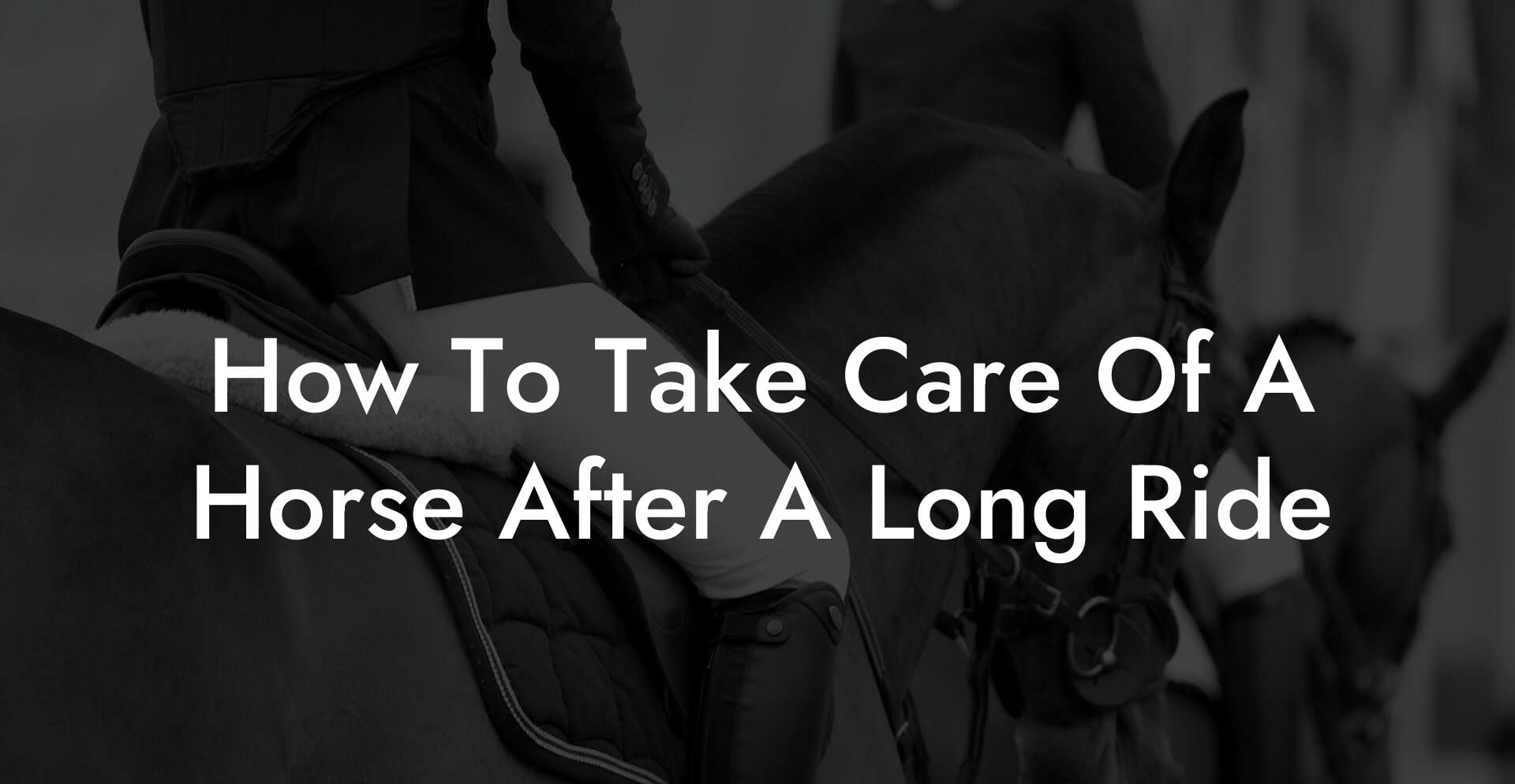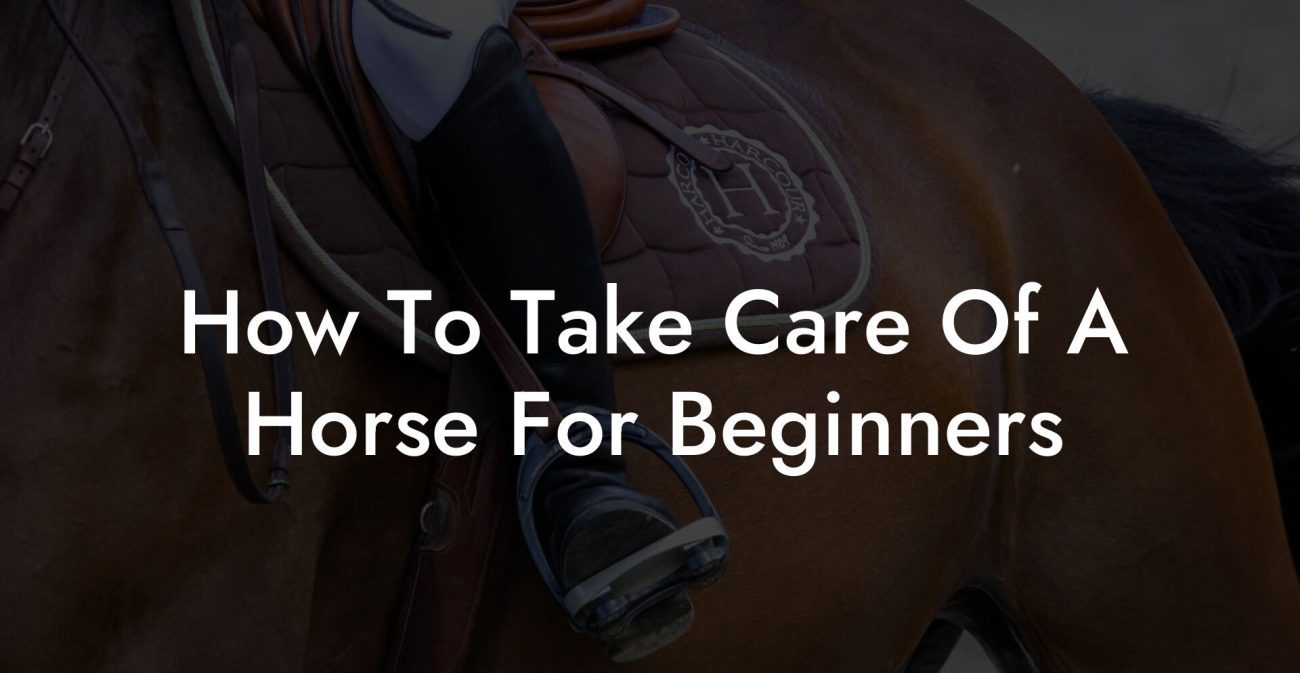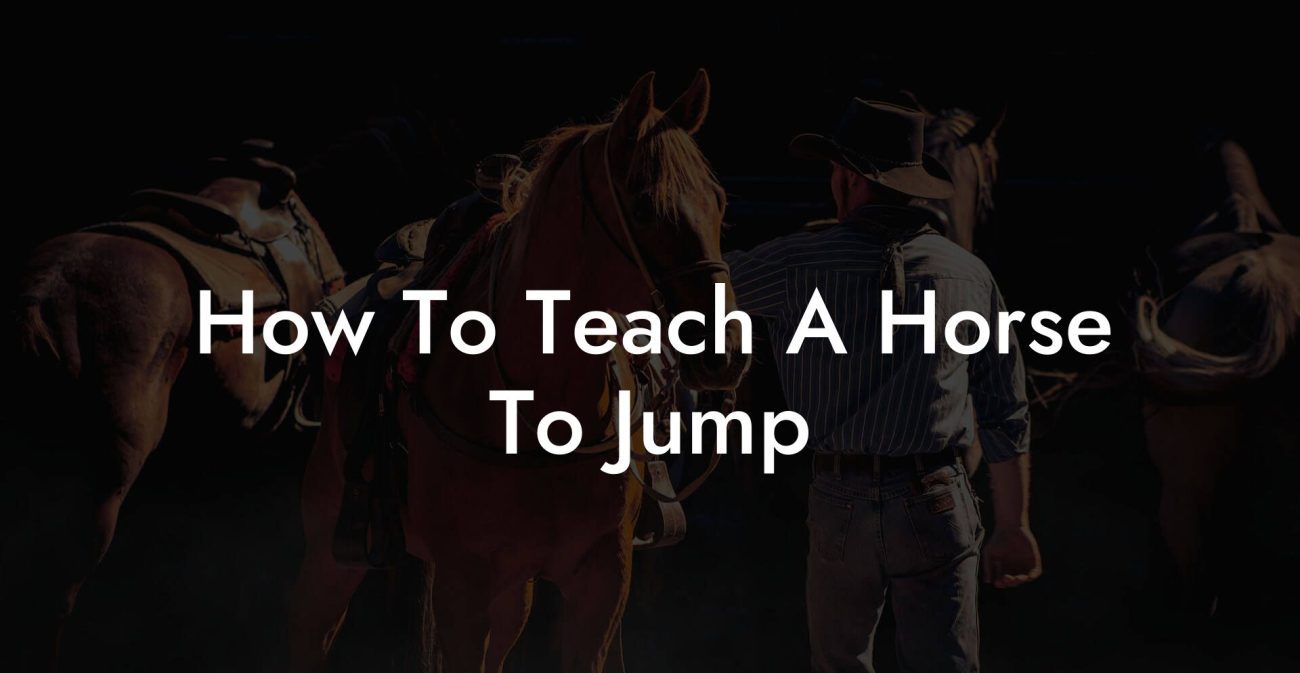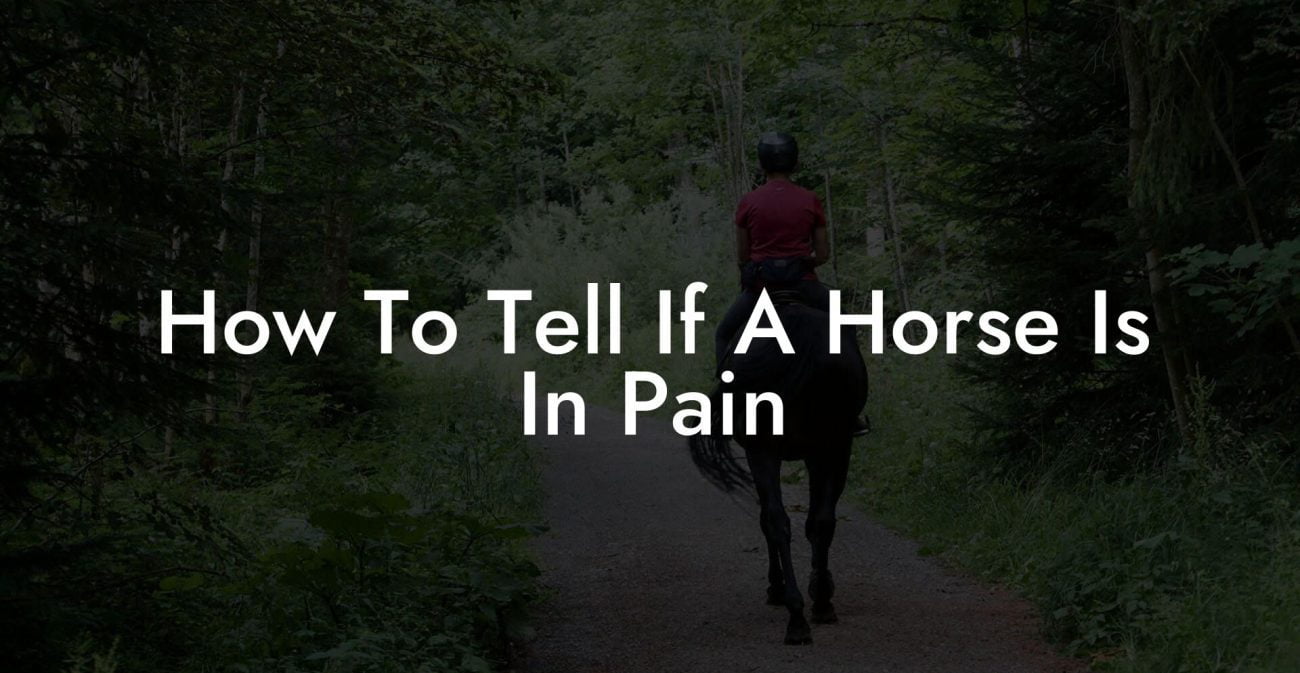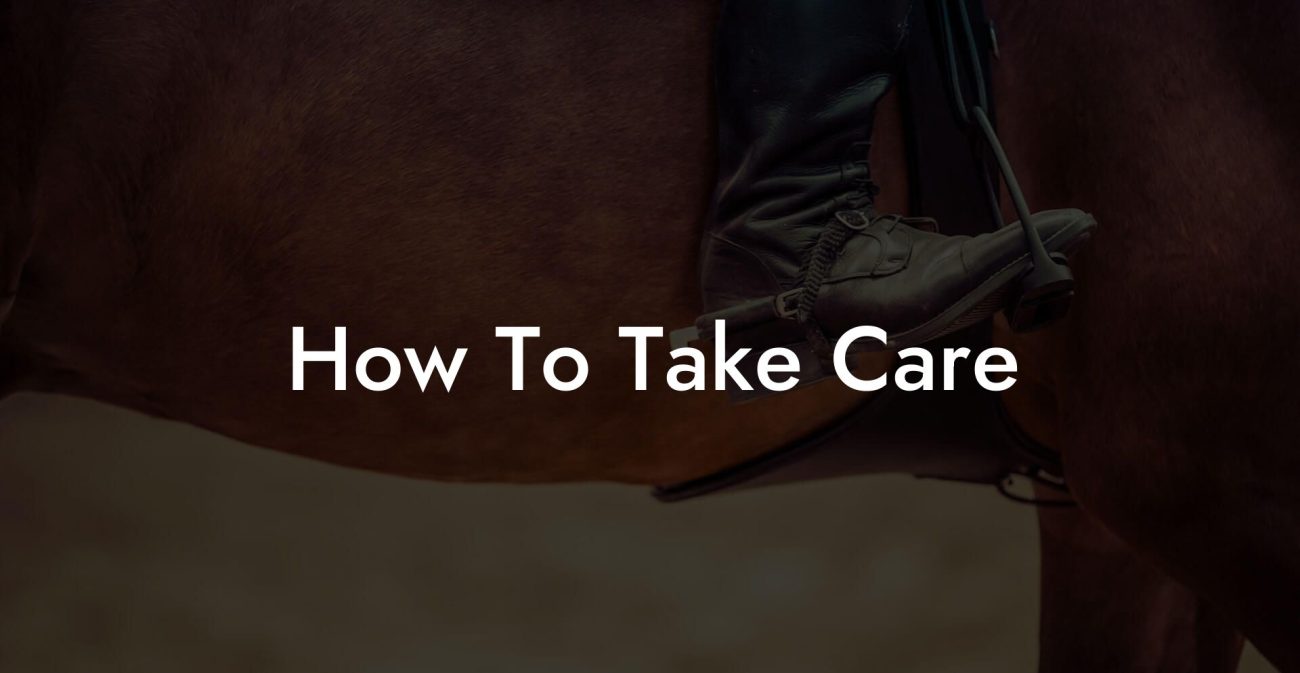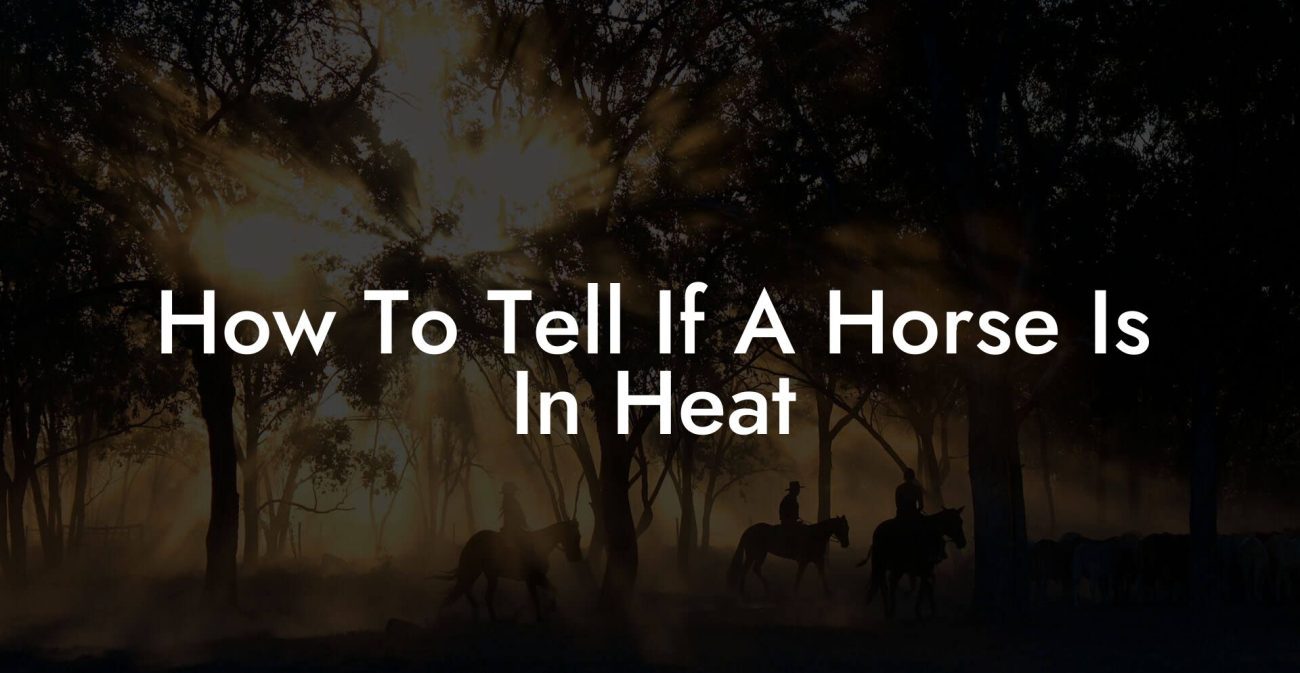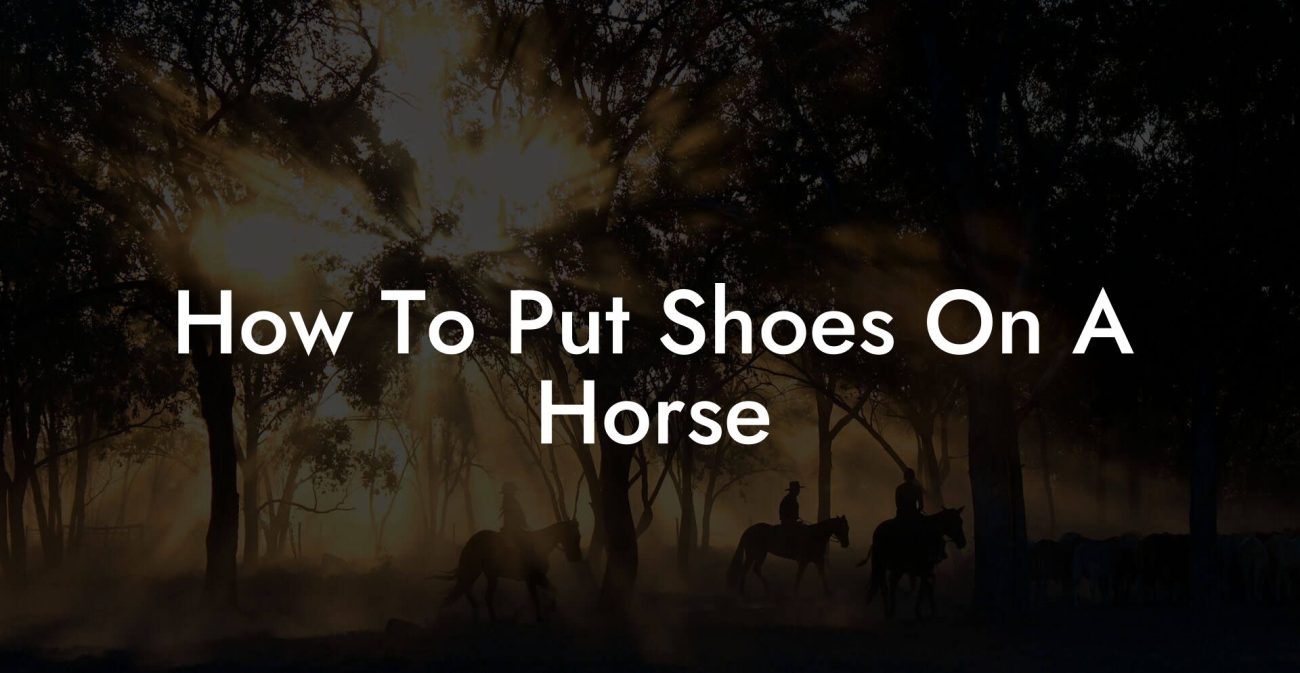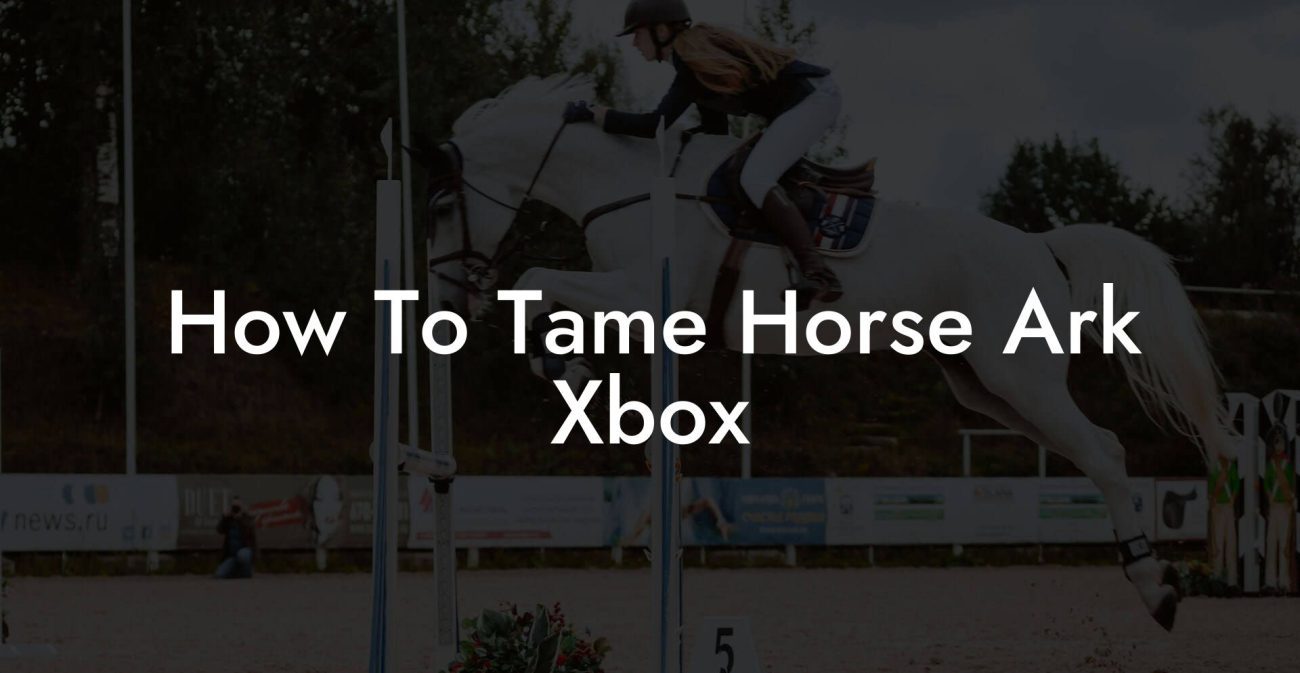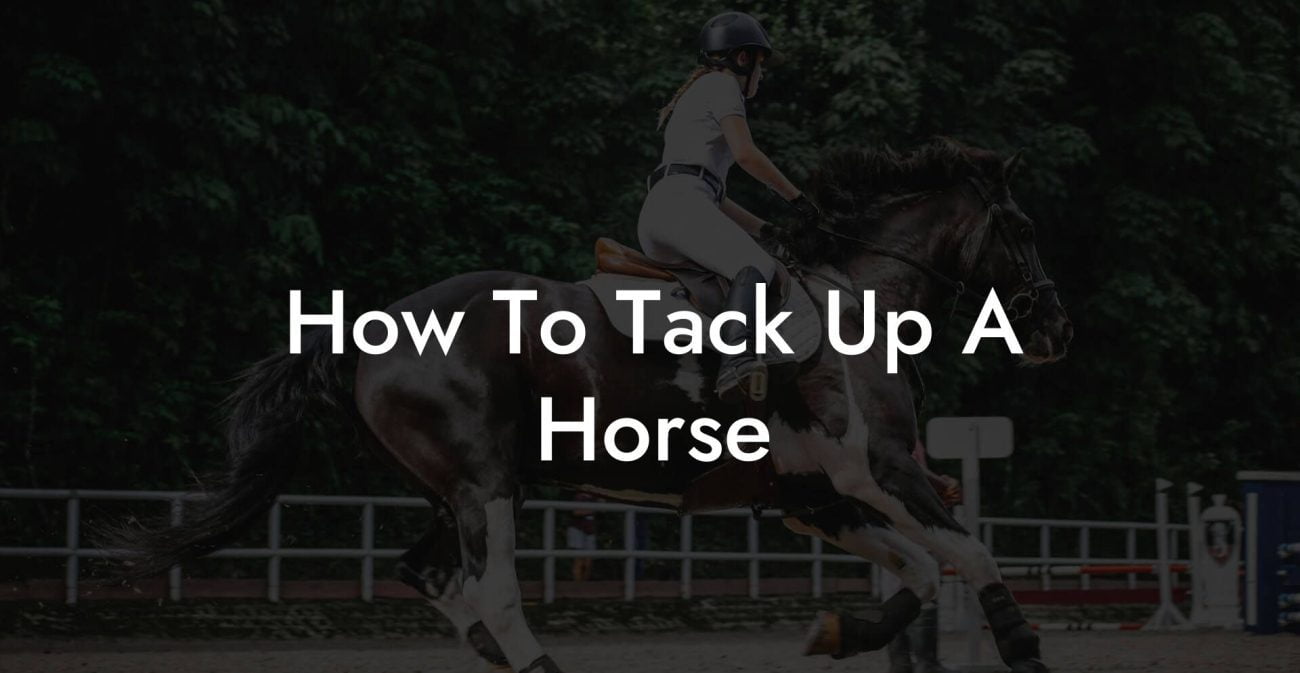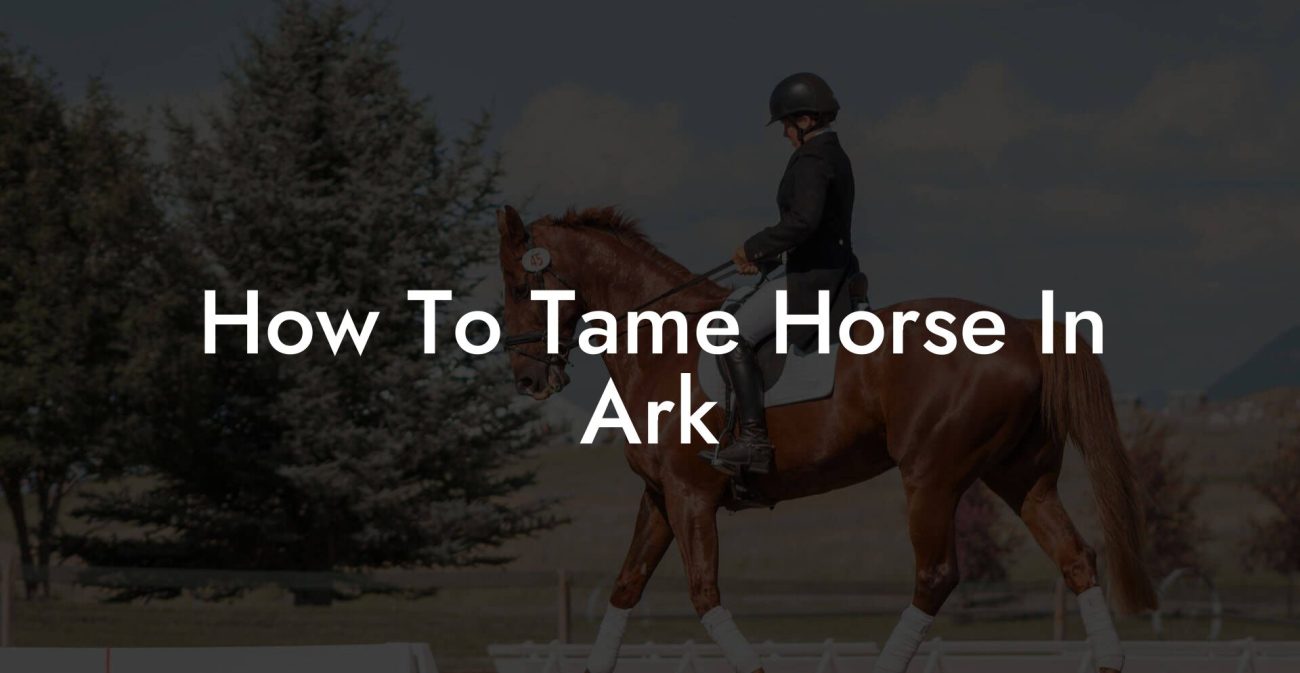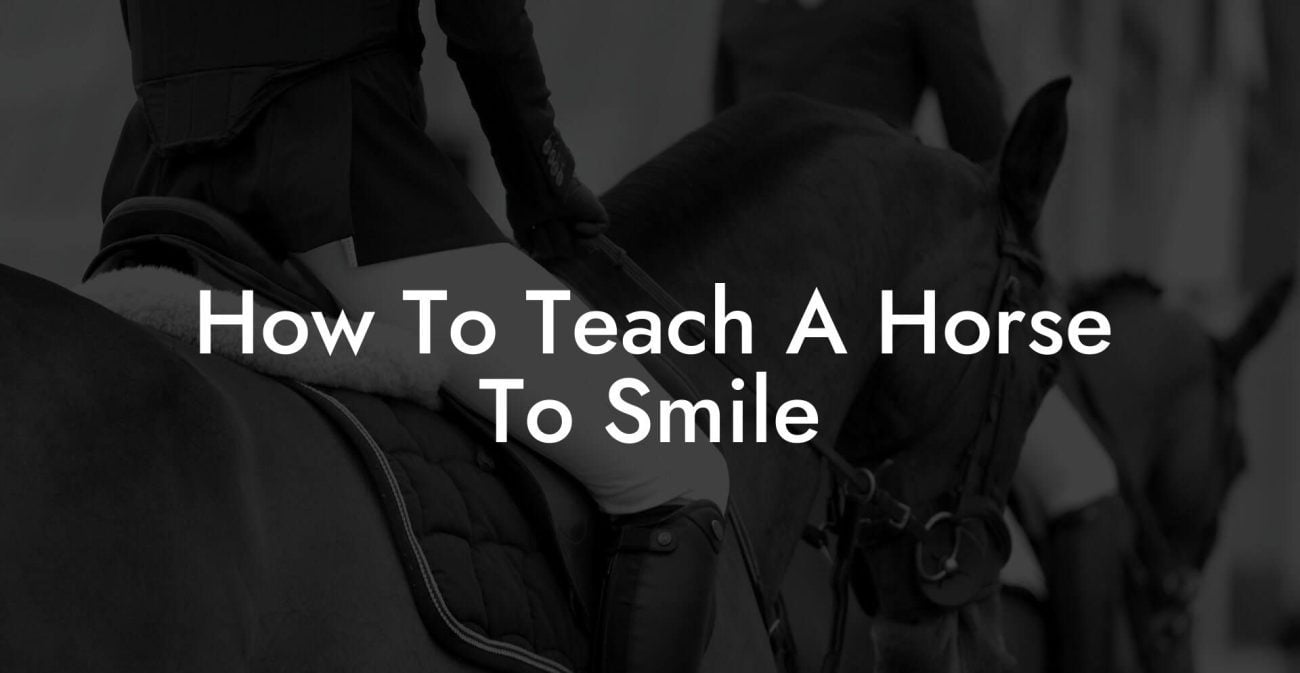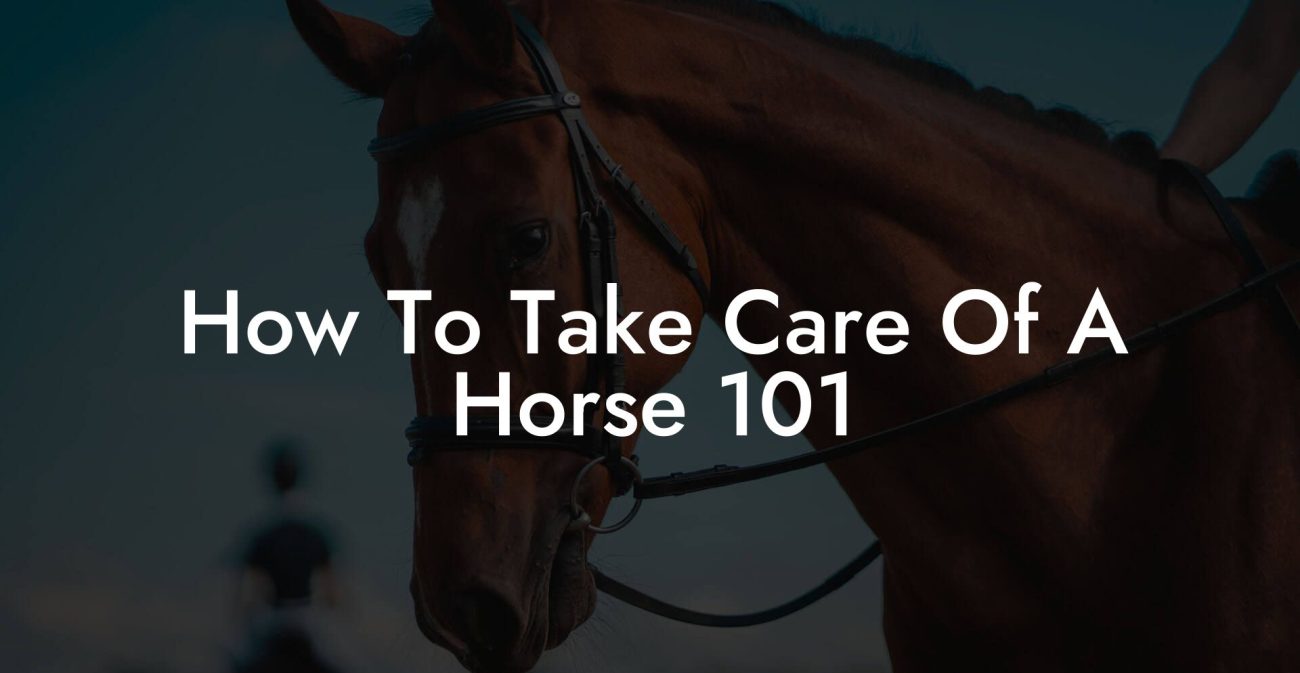Ever finished an epic horseback adventure only to realize your trusty steed now needs some serious TLC? Whether you’ve just wrapped up a cross-country escapade or a breezy trail ride along the coast, taking care of your horse after a long ride isn’t just about a quick brush and a pat on the neck, it’s an art, a ritual, and sometimes downright hilarious. For those who love embracing life with a blend of adventure and quirky humor, here’s your ultimate guide on how to take care of a horse after a long ride. Get ready to dive into a 3000+ word exploration of post-ride equine recovery, packed with expert-backed tips, Gen-Z and millennial-approved language, and a hearty dose of wit.
Quick Links to Useful Sections
- The Importance of Post-Ride Care: More Than Just a Shut-Eye
- Step 1: Initial Cool-Down – Let the Horse Catch Its Breath
- Walking It Out
- Stretch It Out
- Step 2: Hydration Station – Quenching That Equine Thirst
- Fresh and Cool Water
- Electrolyte Boost
- Step 3: Grooming – The Prettiest Post-Ride Ritual
- Brushing Away the Ride
- Check for Rubs, Blisters, and Bruises
- Hoof Care: The Unsung Hero
- Step 4: Tack Removal and equipment Check
- Saddle and Bridle
- Stabling and Storage
- Step 5: Nutritional Support – Feed Them Right
- A Balanced Diet
- Supplements and Minerals
- The Science Behind the Snacks
- Step 6: Recognizing Signs of Overexertion and Injury
- Physical Signs to Look Out For
- Behavioral Cues
- Integrative and Holistic Approaches to Equine Recovery
- Massage Therapy for Horses
- Acupuncture: Ancient Wisdom for Modern Equines
- Incorporating Mindfulness into Daily Routines
- Case Studies: Real-Life Tales from the Trail
- The Marathon Trail Blazer
- The Accidental Spa Day
- Early Detection and Proactive Measures
- Creating Your Personalized Post-Ride Routine
- Assessing Your Horse’s Needs
- Designing a Multi-Step Routine
- Routine Adjustments and Vet Consultations
- Common Pitfalls in Post-Ride Horse Care (And How to Avoid Them!)
- Skipping the Cool-Down
- Overlooking Injury Signs
- Neglecting Equipment Maintenance
- Inconsistent Nutrition and Hydration
- Resources and Community Support: Your Next Steps
- Online Forums and Social Media Groups
- Veterinary Advice and Continuing Education
- Equestrian Blogs and Podcasts
- Diving Deeper: Maintenance Routines for the Long Haul
- Seasonal Adaptations
- Exercise Variety and Active Recovery
- Regular Check-Ups and Adjustments
- FAQs: Your Burning Questions on Post-Ride Horse Care Answered
- Your Road to a Happier, Healthier Ride Every Time
The Importance of Post-Ride Care: More Than Just a Shut-Eye
Picture this: You’ve just saddled up, galloped through some breathtaking scenery, and now your horse is sunning itself like a supermodel on a lazy afternoon. But don’t be fooled by that relaxed posture, after a long ride, your magnificent companion needs more than just a good stretch. Post-ride care is essential for preventing injuries, reducing stress, and ensuring that your equine buddy recovers fully so that the adventures can continue.
Why all the fuss? Long rides can be brutally exhausting on a horse’s muscles, joints, and even hooves. Consider it their version of a marathon, and nobody likes feeling sore the next day, not even our four-legged friends. With proper care, you can help your horse bounce back faster, ward off potential injuries, and keep those galloping vibes alive for many more adventures.
So, let’s break down the crucial steps that make up a solid post-ride routine and why each detail, from careful grooming to balanced nutrition, matters. Ready to become your horse’s post-ride hero? Let’s hit the turf!
Step 1: Initial Cool-Down – Let the Horse Catch Its Breath
The first step in your horse’s recovery after a long ride is the all-important cool-down period. Just as the adrenaline rush from an intense workout can leave your muscles screaming for relief, your horse’s body needs time to transition from high-energy activity to a calmer state. A proper cool-down can prevent muscle stiffness, clear lactic acid from the muscles, and reduce the risk of injuries.
Walking It Out
Once you’re back from your ride, start with a 10-15 minute walk at a slow pace. This isn’t just a leisurely stroll for Instagram-worthy moments, it’s a scientifically backed method to help your horse’s body gradually adjust from exertion to rest. A relaxed, slow walk helps to lower the heart rate and promotes better blood circulation, which in turn eases muscle tension.
Stretch It Out
While your horse might not be following yoga classes (though some owners claim their horses are natural yogis), a few gentle stretches can do wonders. Encourage your buddy to extend its neck and stretch its legs by guiding it through a few safe movements. Using your hands to massage and stretch the muscles (think of this as a spa session on the go) helps in alleviating the tightness that comes with a rigorous ride.
Step 2: Hydration Station – Quenching That Equine Thirst
Hydration is key after any high-intensity exercise, and horses are no exception. During a long ride, they lose a considerable amount of fluid through sweating. Ensuring that your horse is rehydrated is crucial for maintaining muscle function, regulating body temperature, and aiding in recovery.
Fresh and Cool Water
Immediately after your ride, offer your horse fresh, cool water. Avoid water that’s too cold, as this can sometimes shock their system. A readily available water source not only calms your horse down but also jump-starts the natural cooling process.
Electrolyte Boost
After a strenuous ride, consider mixing in an electrolyte solution into the water. Think of it as the equine version of a sports drink, electrolytes like sodium, potassium, and magnesium help in replenishing vital minerals lost during the ride. Many modern equine nutritionists swear by this method, ensuring that horses recover faster and perform better on subsequent rides.
Step 3: Grooming – The Prettiest Post-Ride Ritual
Grooming is arguably one of the most rewarding aspects of horse care. It’s not only about keeping your horse looking its best but also serves as a vital health check-up. Every brush stroke can reveal signs of fatigue, injuries, or even insect bites you need to address.
Brushing Away the Ride
After a long ride, start by using a soft brush to remove any sweat, dust, or dirt from your horse’s coat. This isn’t just for aesthetics, brushing promotes blood flow beneath the skin, which can help with the healing process. Plus, if your horse ever decides to model for a vintage equine fashion shoot, you’ll be ready!
Check for Rubs, Blisters, and Bruises
While grooming is a blissful activity, it also offers an opportunity to inspect your horse for any potential trouble spots. Look out for rubbed patches, bruises, or even small cuts that might have occurred during the ride. If you notice any concerning marks, it might be time to consult your vet. A little extra caution when it comes to injuries now can prevent bigger problems down the road.
Hoof Care: The Unsung Hero
Don’t forget to pay special attention to the hooves. After a long ride, debris, rocks, and dirt can easily lodge between the hooves. Give them a thorough cleaning, and check for any signs of damage or discomfort. Maintaining healthy hooves is vital because they are literally the foundation of your horse’s performance.
Step 4: Tack Removal and equipment Check
Whether you sport the latest in equestrian fashion or a trusty old saddle, the equipment used during a ride needs its own post-ride ritual. Not only do you want your horse to be comfortable, but your gear also requires special cleaning and inspection.
Saddle and Bridle
Carefully remove the saddle, bridle, and any other tack. Wipe down these pieces of equipment to remove sweat, dust, and any droppings they might have picked up along the way. Proper tack care extends the life of your gear and prevents bacteria buildup, which might irritate your horse’s skin.
Stabling and Storage
Once the equipment is clean, store it in a well-ventilated area away from direct sunlight. If you’re a gear-head, consider investing in gear-specific cleaning products that are eco-friendly and safe for your equipment. Remember: a happy horse and happy gear lead to more seamless rides.
Step 5: Nutritional Support – Feed Them Right
After an exhausting long ride, your horse’s body is in prime need of fuel to start the recovery process. Just like you wouldn’t expect to run on empty, your horse needs a balanced mix of nutrients to restore energy and repair muscles.
A Balanced Diet
Post-ride nutrition should focus on a mix of high-quality forage (like hay or fresh pasture), grains, and possibly a specially formulated recovery feed. These feeds are designed to be nutrient-dense, offering the right blend of carbohydrates, proteins, and fats to kickstart muscle repair and energy replenishment.
Supplements and Minerals
Depending on the intensity and duration of the ride, supplements can be a helpful addition. Electrolytes, vitamins, and mineral supplements are often recommended to support recovery. Keep in mind, though, consult with your veterinarian or an equine nutritionist to tailor a supplement regimen that suits your horse’s specific needs.
The Science Behind the Snacks
Research in equine nutrition highlights the importance of antioxidants found in fresh fruits and vegetables. These natural compounds can help reduce inflammation and speed up the recovery process. So, when the mood strikes, don’t be surprised if your horse gives you a “thank-you” nuzzle after a little apple treat.
Step 6: Recognizing Signs of Overexertion and Injury
Even with the best care, sometimes rides can take their toll. As a responsible rider, it’s essential to recognize the signs that indicate your horse might be suffering from overexertion or injury. Knowledge is power, especially when it comes to keeping your animal companion healthy.
Physical Signs to Look Out For
Keep an eye on your horse’s gait, behavior, and overall demeanor. Common signs of overexertion include:
- Limping or uneven strides
- Excessive sweating or a prolonged heavy respiratory rate
- Stiffness or reluctance to move
- Visible swelling, bruises, or cuts
- A change in behavior, such as irritability or lethargy
If any of these symptoms persist beyond a few hours, it’s wise to consult with a veterinarian. Early detection and intervention can prevent what might seem like a minor issue from escalating into something more serious.
Behavioral Cues
Horses, much like humans post-marathon, often display behavioral cues that indicate discomfort. A normally chatty horse might become unusually quiet, or a typically spirited companion could appear disinterested. These subtle cues can be key to identifying when your horse might need extra rest or professional evaluation.
Integrative and Holistic Approaches to Equine Recovery
While the traditional steps of cooling down, hydrating, grooming, and feeding are paramount, modern equine care has increasingly embraced integrative and holistic approaches to recovery. For today’s Gen-Z and millennial riders, these methods ask you to look beyond the basics and consider the complete well-being of your horse.
Massage Therapy for Horses
Just as you might unwind with a massage after a long day at the gym, horses can also benefit from massage therapy. Using gentle pressure and targeted knots, massage can help relieve muscle tension, improve blood flow, and accelerate the healing process. Some riders even set up portable massage routines as part of their post-ride care!
Acupuncture: Ancient Wisdom for Modern Equines
Acupuncture isn’t just for humans looking to achieve zen levels of calm, increasingly, it’s being adopted in the world of equine recovery. By stimulating specific points on a horse’s body with fine needles, this practice can help relieve chronic pain, reduce inflammation, and enhance systemic balance. It’s a holistic nod to ancient healing techniques that work hand-in-hoof with modern veterinary medicine.
Incorporating Mindfulness into Daily Routines
You might wonder, “How does mindfulness play a role in equine recovery?” When a horse recognizes that its environment is calm and nurturing, it can relax more fully, which in turn aids recovery. Many riders have started incorporating calming music, gentle talking, and even meditation-like silence during grooming sessions to help create an atmosphere of tranquility.
By integrating these holistic practices, you’re not only addressing physical recovery but also fostering mental and emotional well-being. Your horse isn’t just a body that needs fixing, it’s a living, breathing partner in adventure.
Case Studies: Real-Life Tales from the Trail
Let’s take a break from the how-tos and dive into some real-life stories that underscore the value of comprehensive post-ride care. Here are a few case studies that highlight how riders have successfully navigated the challenges of equine recovery with a mix of traditional and innovative techniques.
The Marathon Trail Blazer
Meet Bella, a spirited mare who once took on a 50-mile trail ride through rocky terrain. Bella’s rider, Jamie, noticed that after the ride, she was slightly stiff and reluctant to move. Instead of rushing into her usual routine, Jamie implemented a combination of a slow cool-down walk, a thorough grooming session, and even a few minutes of hoof massage. The results? Bella bounced back in record time, and Jamie’s social media stories even sparked a conversation about the importance of detailed post-ride protocols.
The Accidental Spa Day
Then there’s Max, a gentle giant with a penchant for muddy escapades. After a particularly long ride through an unpredictable weather maze, Max’s rider, Alex, realized the importance of not only cleaning the horse but also pampering him. Alex treated Max to a home-made spa day, complete with a warm wash, a soothing oil massage, and even a cooling mud mask (yes, you read that right). This creative approach not only boosted Max’s recovery but also turned a challenging day into a bonding experience that Alex still jokes about during riding lessons.
Early Detection and Proactive Measures
Finally, consider the case of Daisy, a veteran mare whose subtle signs of overexertion almost went unnoticed, until her rider Miriam started paying attention to the tiniest changes in behavior and gait. By integrating regular post-ride assessments, gentle massage sessions, and quick electrolyte fixes, Miriam was able to catch a developing issue early, consulting her vet and preventing a potentially serious injury. Daisy’s recovery became a testament to the importance of vigilance and proactive care in the equine world.
These stories remind us that while every horse is unique, the blend of science, art, and a dash of creativity in post-ride care can lead to lasting benefits for our loyal companions.
Creating Your Personalized Post-Ride Routine
Much like your own workout recovery plan might evolve based on your fitness and lifestyle, your horse’s post-ride care routine should be as unique as they are. Developing a personalized plan that encompasses physical, nutritional, and even holistic elements can make all the difference.
Assessing Your Horse’s Needs
The first step is knowing your horse, its quirks, strengths, and areas that need extra attention. Keep a recovery journal noting any signs of discomfort or unusual behavior after each ride, and use it to adjust your routine over time. Reacting early to sore muscles or nicks from tack can prevent minor issues from turning into major setbacks.
Designing a Multi-Step Routine
An effective routine might include:
- A structured cool-down period with a slow walk and light stretching.
- Immediate hydration with fresh water plus an electrolyte solution as needed.
- An in-depth grooming session that covers brushing, checking for injuries, and hoof cleaning.
- Retrieval and cleaning of tack, ensuring your gear is as cared-for as your horse is.
- A balanced nutritional plan incorporating high-quality forage and proper supplements to encourage muscle repair.
- Additional holistic practices like massage, soothing music, or even acupuncture if you’re feeling adventurous.
With consistency and attention to detail, you’ll find that your horse not only recovers faster but also enjoys the process of being cared for.
Routine Adjustments and Vet Consultations
No routine is ever set in stone. As your horse ages or as the demands of your rides change (or when you decide to experiment with that new trail ride technique), make sure you revisit and adjust the post-ride routine. Regular consultations with your veterinarian ensure that every aspect of your plan remains effective and safe.
Common Pitfalls in Post-Ride Horse Care (And How to Avoid Them!)
Let’s be honest, sometimes our best intentions can lead to a few blunders. Overlooking small details in post-ride care can sometimes snowball into bigger problems. Being aware of common pitfalls can help you steer clear of mishaps that might leave your horse overtaxed or even injured.
Skipping the Cool-Down
It might be tempting to rush your horse back to the stable and call it a day, but skipping the cool-down is one of the most common mistakes riders make. Rest assured, a steady walk after the ride isn’t just a luxury, it’s a necessity.
Overlooking Injury Signs
A quick glance might miss subtle signs of discomfort. Set aside dedicated time for a full-body check, and if anything seems off, err on the side of caution and seek professional advice.
Neglecting Equipment Maintenance
Dirty tack isn’t just unpleasant, it can harbor bacteria that may lead to skin irritations or infections. Make it a habit to clean and inspect equipment after every ride.
Inconsistent Nutrition and Hydration
While you might be tempted to skip preparing that extra electrolyte blend after a quick ride, maintaining consistent nutrition and hydration is critical for your horse’s recovery. Treat these as non-negotiable components of your post-ride routine.
Avoiding these pitfalls ensures that your horse remains in prime condition to tackle the next adventure, even if that next adventure involves your horse being a bit of a diva after a long day’s work.
Resources and Community Support: Your Next Steps
The world of equine care is vast and ever-evolving. Whether you’re a seasoned rider or a curious newcomer, knowing that you’re part of a supportive community of horse lovers can be incredibly empowering. Here are a few resources to help you on your journey:
Online Forums and Social Media Groups
Platforms like Facebook, Instagram, and specialized equestrian forums are treasure troves of tips, tutorials, and real-life experiences. Engage with fellow riders, share photos of your post-ride rituals, and learn the latest trends in holistic equine care.
Veterinary Advice and Continuing Education
Regularly consulting with your veterinarian or an equine nutritionist will keep you updated on the best practices for your horse’s health. Look for webinars, local workshops, and online courses that delve into advanced topics in post-ride recovery.
Equestrian Blogs and Podcasts
There’s a wealth of knowledge available in the form of blogs and podcasts that focus on everything from recovery techniques to the latest in equine technology. Follow these resources to stay ahead of the curve and continuously refine your routine.
Empower yourself with knowledge, and remember that every bit of care you put into your horse’s recovery is a step toward a long, happy, and healthy partnership on the trails.
Diving Deeper: Maintenance Routines for the Long Haul
Post-ride care isn’t a one-and-done activity, it’s a lifestyle that evolves over time. Just as you mix up your workout routines to keep your body guessing (and to avoid getting bored), your horse’s recovery regimen might require tweaks and updates based on its condition, age, or the types of rides you’re undertaking.
Seasonal Adaptations
The climate plays a huge role in equine care. In the blistering heat of summer, your horse might need extra hydration, more frequent cool-down periods, and even protective gear like fly sheets. In contrast, winter months call for additional warm-ups and extra layers post-ride to fight off the chill. Adjusting your routine seasonally will ensure your horse stays comfortable and healthy year-round.
Exercise Variety and Active Recovery
Incorporate activities like light trail jogging, obstacle courses, or even swimming sessions if accessible. Active recovery not only keeps your horse’s muscles engaged but also adds an element of fun and novelty that can perk up even the most tired steed.
Regular Check-Ups and Adjustments
A routine check-up with your veterinarian can help catch potential issues before they escalate. Use these opportunities to fine-tune your post-ride recovery plan, whether it’s tweaking nutrient ratios or adjusting the intensity of the cool-down sessions.
With the right approach, you’ll cultivate a recovery routine that’s as unique as your horse’s personality, a routine that grows with your experiences and meets every new challenge with resilience and a dash of humor.
FAQs: Your Burning Questions on Post-Ride Horse Care Answered
We’ve tackled a lot of ground in this guide, but we know you probably have questions buzzing in your mind. Here are some of the most frequently asked questions when it comes to taking care of a horse after a long ride.
1. What is the ideal duration for a cool-down walk?
A light 10-15 minute walk is usually sufficient to help your horse’s muscles cool down and to gradually lower its heart rate. Adjust the intensity and duration based on the length and intensity of the ride.
2. How can I tell if my horse is dehydrated after a long ride?
Look for signs such as dry gums, reduced sweating, and a sluggish, less responsive demeanor. Always ensure your horse has access to fresh water immediately after riding.
3. Are electrolyte supplements necessary every time?
Not necessarily every ride, but after particularly strenuous or long-distance rides, an electrolyte supplement can aid in restoring the balance of essential minerals.
4. What should I do if I notice minor injuries during grooming?
For minor abrasions or bruises, a gentle cleaning, followed by a vet-recommended topical treatment, is usually sufficient. However, if the injury appears to be worsening, consult your vet right away.
5. Can holistic recovery practices like massage really help my horse?
Absolutely. Many riders have found that regular massage, combined with other integrative approaches, greatly reduces muscle tension and speeds up recovery.
6. How frequently should I adjust my horse’s post-ride routine?
It’s best to regularly evaluate your routine, ideally every few months or after any major ride, to adapt to your horse’s evolving needs. Regular vet check-ups are great opportunities to reassess.
7. Is it safe to keep riding if my horse shows slight signs of fatigue?
Listen to your horse. If signs of fatigue or discomfort persist, it’s better to give your horse an extra day of recovery and consult with a professional if necessary.
8. What role does nutrition play in overall equine recovery?
Nutrition is critical. The right balance of forage, grains, and supplements not only replenishes energy but also aids in muscle repair and overall recovery after strenuous rides.
9. How do I ensure the tack is in good condition post-ride?
A thorough cleaning, regular inspections, and prompt repairs will help maintain your tack. Keeping an eye on any wear and tear is essential for both your horse’s comfort and safety.
10. When should I contact a veterinarian during the post-ride recovery process?
If you notice unusual signs such as prolonged lethargy, abnormal swelling, or increased irritability that doesn’t improve with basic care, it’s time to consult your vet.
Your Road to a Happier, Healthier Ride Every Time
Caring for your horse after a long ride is more than just a checklist, it’s a commitment to a healthier, more resilient partnership between you and your equine friend. From that crucial cool-down walk to the thoughtful integration of nutrition and holistic therapies, every step is a building block in sustaining your horse’s peak condition.
Embrace every moment, laugh off the inevitable mishaps (like saddle sweat that becomes a running joke), and cherish the growth you both experience with every ride. Whether you’re navigating rugged trails or relaxed beach rides, remember that careful post-ride care is your secret weapon to ensuring your horse stays in top form for all the adventures to come.
So, next time you dismount, take a deep breath, and turn your horse’s recovery time into a celebration of health, vitality, and that unbeatable bond you share. Happy riding, and here’s to many more journeys filled with laughter, care, and equine excellence!

